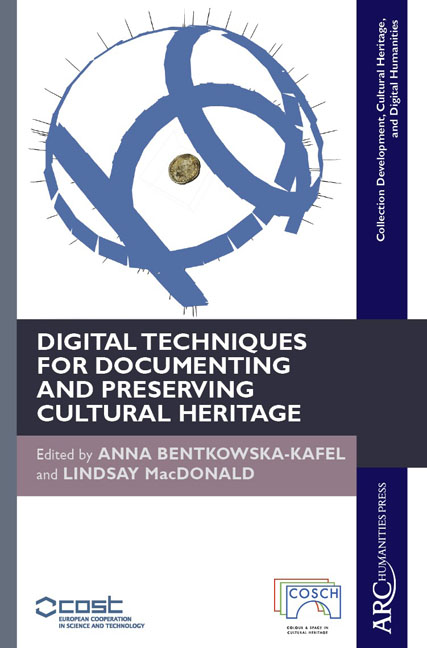Chapter 2 - From a Buried Fragment to the Virtual Artefact: A Case Study of Greek Pottery
Published online by Cambridge University Press: 26 January 2021
Summary
ABSTRACT
The fragmentary condition of objects is often an issue in the study of material cultural heritage. In archaeology, and in pottery studies in particular, the fragmentary condition of excavated objects impacts on research into their history and presentation. Ceramic vessels and vase fragments are the most numerous archaeological findings and a primary source of information about various aspects of ancient life: private, public, religious, economic and technological, social and artistic. The subject of this chapter is a fragmentary clay drinking cup, kantharos, a vessel attributed to the god Dionysus and a typical drinking vase used at symposia (gatherings). This particular kantharos was unearthed during the excavations at the ancient settlement of Therme, today's Karabournaki near Thessaloniki, Greece. The vase dates to the Archaic period between the seventh and the sixth century BC.
Although the kantharos is preserved to a large extent, its fragmentary condition challenges complete reconstruction. Evidence for reliable reconstruction is insufficient: the lower part that would originally have consisted of a base and foot, is missing. The process of virtual reconstruction through 3D visualization, described in this chapter, has contributed significantly to the study and presentation of the vase. The authors consider the advantages and limitations of technologies used. The process of creating this particular computer model may be applied to other fragmentary vases that come either from the excavation at Karabournaki or any other archaeological site or collection. This research may be of interest to experts in 3D technologies, as well as archaeologists and art historians, both academic scholars and students, museum curators and conservators, educators and other multidisciplinary audiences.
Keywords: Greek pottery, kantharoi, fragmented objects, archaeological excavation data, virtual reassembly, 3D approximation, visualization, COSCH
Introduction
The focus of this chapter is on how completion of pottery sherds through three-dimensional (3D) digital visualization contributes to archaeological research. Pottery is usually discovered in fragments and in vast numbers. Displayed in museums or deposited in storerooms, the clay sherds play an essential role in reconstructing the past. They are primary sources of information about various aspects of ancient life: private, public, and religious; economic and technological; social and artistic. They are, indirectly, also essential in archaeology for establishing the chronology of the finds under investigation (Biers 1992). For this reason pottery studies are a principal area of archaeological expertise (Orton and Hughes 2013).
- Type
- Chapter
- Information
- Publisher: Amsterdam University PressPrint publication year: 2018



